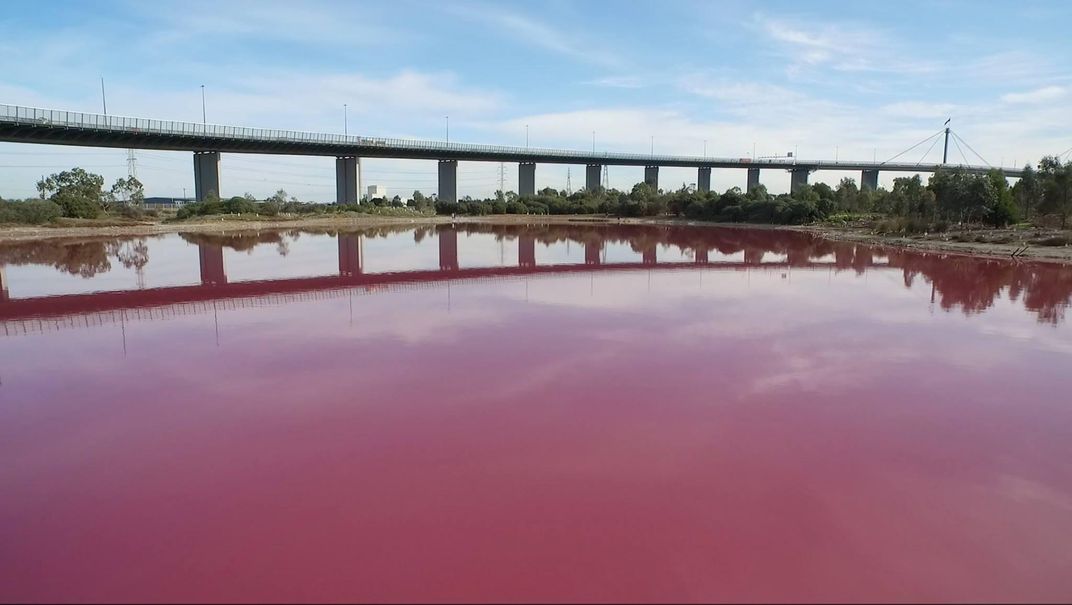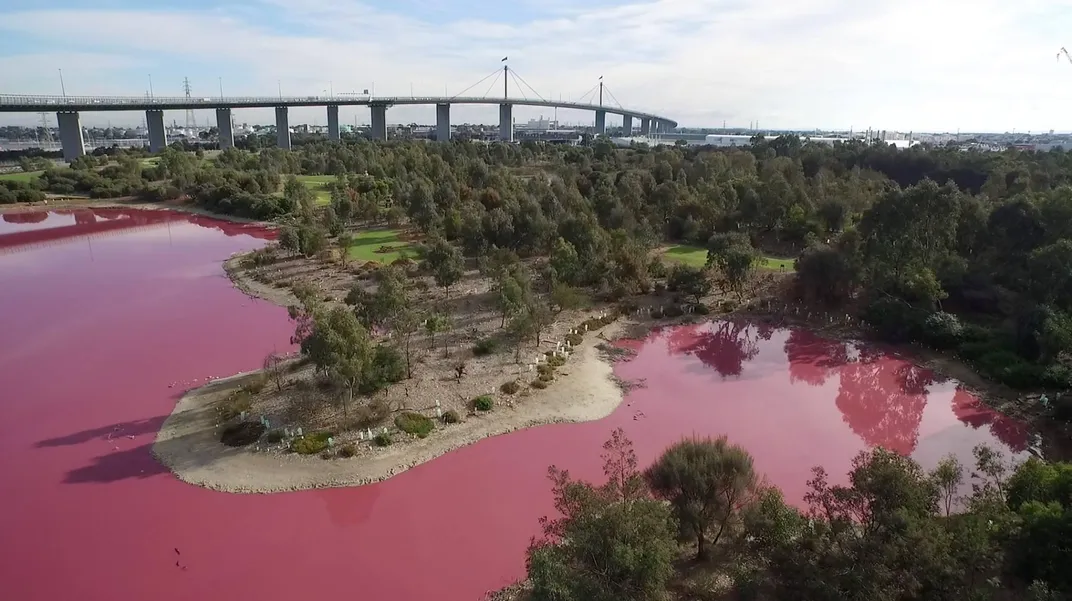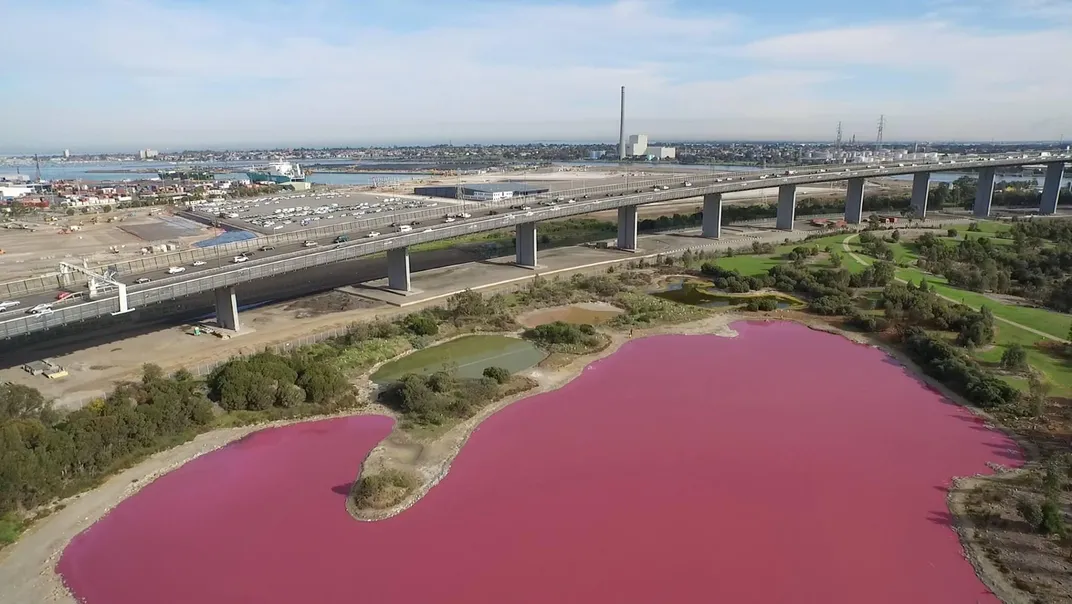Why Did This Australian Lake Turn Bright Pink?
Hot weather, scant rainfall and high salt levels have created a perfect storm for pinkness
Last week, a Melbourne salt lake at Westgate Park turned a vibrant shade of pink. This natural phenomenon is an annual occurrance, reports Joanna Klein for the New York Times, and owes its vibrant hue to a single-celled algae that thrives in conditions of extreme saltiness.
After periods of hot and dry conditions, Klein reports, water evaporates from the lake, skyrocketing its salinity “to eight or 10 times that of the ocean.” Such high salinity is common this time of year after periods high temperatures and scant rainfall, according to the Facebook Page of Parks Victoria, which manages the area.
Few organisms can survive in such conditions, Klein writes, but in Westgate Park lake one living creature thrives: a single-celled algae called Dunaliella salina. When salt begins to build in its environment, the microbe starts producing carotenoids—a class of colored pigment.
And voila: a perfect storm of pinkness.
Though the cotton-candy colored waters look inviting, experts have warned visitors against diving in, reports the BBC. Mark Norman, Parks Victoria chief conservation scientist, tells the BBC that the water is not necessarily dangerous, but also isn't great for swimming.
"It's so salty and muddy on the bottom that you would come out looking like a frosted rum ball, especially when you dried," he says.
Less dramatic versions of this process take place in salty bodies of water across the globe. When shrimp feast on carotenoid-producing algae, for instance, they take on a pinkish-color, and flamingos get their signature hue from munching on pink shrimp. Lakes where flamingos dwell usually do not appear pink, Klein explains, because their waters can support a variety of wildlife in addition to the algae. Sediment can inhibit the process, as can the type of salt.
Though very specific conditions are required for a lake to display the confectionary brilliance seen at Westgate Park, the phenomenon isn’t as rare as you might think. According to the BBC, naturally occurring pink lakes can also be seen at Australia’s Murray-Sunset National Park. Lake Hillier in Western Australia has been known to turn pink, too. The Salina de Torrevieja in Spain, Dusty Rose Lake in Canada, and Lake Retba in Senegal have all boasted pink waters. As Danny Lewis reports for Smithsonian.com in August of 2016, Lake Burlinskoye turned bright pink during a heat wave in northern Russia.
Pretty as it may be, the Westgate Park lake won’t stay pink for much longer. The waters are expected to return to their regular blue hue by early June, when the temperatures cool and Australia’s winter begins.


